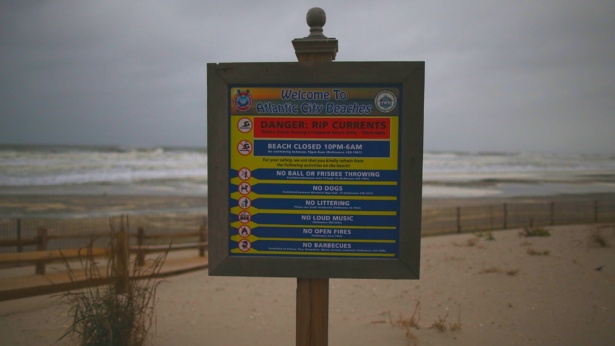A powerful rip current left multiple swimmers in distress and killed a 10-year-old Florida girl, according to a news release.
The swimming tragedy took place at Siesta Public Beach around 6:30 p.m. on Sunday, according to the Sarasota County Sheriff’s Office (SCSO).
Emergency calls alerting authorities about three swimmers struggling in the water about 100 yards offshore were made by witnesses that evening.
First-responders acted quickly and managed to bring the distressed swimmers—an adult woman and two children—back to shore with the assistance of bystanders and emergency medical service personnel, police said.
One female swimmer was unresponsive after officials brought her to shore, police said. Paramedics attempted to revive the girl and lifesaving measures were rendered but were unsuccessful.

The other swimmer caught in the current were treated at the beach and later allowed to go back home. No information on the relationship between the three swimmers was provided.
The little girl who died that day was later identified as Irys Wright from Lake Wales. Her next of kin have been notified, police said. Wright was pronounced dead at a nearby hospital.
“Based on preliminary investigation and according to witnesses, it appears the victim (Wright) was caught in a rip tide current that ultimately led to her drowning,” according to the release.
Police said there is no evidence of foul play or child neglect at this time, and detectives continue to conduct a death investigation. Wright’s official cause of death will be determined later after an investigation by the medical examiner’s office, officials said.
‘At a Loss for Words’
Following the incident, a GoFundMe page was set up to support the girl’s family with prayers and funding.
“We have lost a very precious angel, Irys Wright who was one of my 4th-grade students this year,” Amy Rietschel-Furick said.
Rietschel-Furick is Wright’s teacher and the organizer of the page and said she is “at a loss for words” after hearing about the tragic news of one of her students.

“Irys is very special to me and truly an amazing little girl,” she said. “The family is already dealing with financial worries and I want to help ease everything and anything I can for them.”
Wright’s father also paid tribute to his daughter on his personal Facebook page. “Daddy will forever LOVE YOU WITH ALL MY HEART,” he wrote in the caption of one post.
Rip Currents
Rip currents are hazardous to swimmers and make up about 80 percent of beach rescues and kill about 100 people in the United States annually. They are powerful, narrow channels of fast-moving water that can reach moving speeds of up to eight feet per second, according to the U.S. National Oceanic and Atmospheric Administration (NOAA).
Whenever there are waves of sufficient energy, rip currents—simply called “rips”—can form. In the United States, they are widespread along the East, Gulf, and West coasts, as well as along the shores of the Great Lakes.

Swimmers without any experience, water skills, or knowledge of rips often panic and may exhaust themselves by trying to counter the current by swimming straight back to shore. Doing this will put yourself at risk of drowning because of fatigue, NOAA said.
People caught in rips are recommended not to swim directly back to shore against the current but to swim at a right angle across the current. A rip current is usually not very wide, so swimming parallel to the shore in either direction will be the easiest way to escape it.
Rips do not pull swimmers under water, which is a common misconception. They simply carry the swimmer away from the shore in a narrow band of moving water. Eventually, the rip will dissipate out in deeper waters far from the shore, which is why swimming perpendicularly out of the current is the fastest way to get back to safety.
Rips are the most common danger at U.S. beaches, with tens of thousands of people needing assistance from lifeguards every year after getting caught in the currents, according to NOAA.

